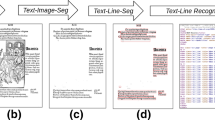Abstract
Due to recent advances in high dynamic range (HDR) technologies, the ability to display HDR images or videos on conventional LCD devices has become more and more important. Many tone-mapping algorithms have been proposed to meet this end, the choice of which depends on display characteristics such as luminance range, contrast ratio and gamma correction. An ideal HDR tone-mapping processor should have a robust core functionality, high flexibility, and low area consumption, and therefore an ARM-core-based system-on-chip (SOC) platform with a HDR tone-mapping application-specific integrated circuit (ASIC) is suitable for such applications. In this paper, we present a systematic methodology for the development of a tone-mapping processor of optimized architecture using an ARM SOC platform, and illustrate the use of this novel HDR tone-mapping processor for both photographic and gradient compression. Optimization is achieved through four major steps: common module extraction, computation power enhancement, hardware/software partition, and cost function analysis. Based on the proposed scheme, we present an integrated photographic and gradient tone-mapping processor that can be configured for different applications. This newly-developed processor can process 1,024 × 768 images at 60 fps, runs at 100 MHz clock and consumes a core area of 8.1 mm2 under TSMC 0.13 μm technology, resulting in a 50% improvement in speed and area as compared with previously-described processors.



















Similar content being viewed by others
References
Mantiuk, R., Krawczyk, G., Myszkowski, K., & Seidel, H. P. (2004). Perception-motivated high dynamic range video encoding. ACM Transactions on Graphics, 23(3), 733–741.
Reinhard, E., Ward, G., Pattanaik, S., & Debevec, P. (2005). High dynamic range imaging. San Mateo: Morgan Kaufmann.
Tumblin, J., & Rushmeier, H. E. (1993). Tone reproduction for realistic images. IEEE Computer Graphics and Applications, 13(6), 428.
Chiu, K., Herf, M., Shirley, P., Swamy, S., Wang, C., & Zimmerman, K. (1993). Spatially nonuniform scaling functions for high contrast images. In Graphics Interface ’93 (pp. 245–244).
Reinhard, E., Stark, M., Shirley, P., & Ferwerda, J. (2002). Photographic tone reproduction for digital images. In ACM SIGGRAP (pp. 26776).
Pattanaik, S. N., Ferwerda, J. A., Fairchild, M. D., & Greenberg, D. P. (1998). A multiscale model of adaptation and spatial vision for image display. In Proceedings of SIGGRAPH 98 (pp. 287–298)
Fattal, R., Lischinski, D., & Werman, M. (2002). Gradient domain high dynamic range compression. ACM Transactions on Graphics, 21(3), 249–256.
Goodnight, N., Wang, R., Wooleey, C., & Humphreys, G. (2003). Interactive time-dependent tone mapping using programmable graphics hardware. In Rendering techniques, 14th eurographics symposium on rendering (pp. 26–37).
Drago, F., Myszkowski, K., Annen, T., & Chiba, N. (2003). Adaptive logarithmic mapping for displaying high contrast scenes. Computer Graphics Forum, 22(3), 419–426.
Durand, F., & Dorsey, J. (2002). Fast bilateral filtering for the display of high-dynamic-range images. ACM Transactions on Graphics, 21(3), 257–266.
Hassan, F., & Carletta, J. E. (2007). A real-time FPGA-based architecture for a Reinhard-like tone mapping operator. In Processing of 22nd ACM SIGGRAPH/EUROGRAPHICS (pp. 65–71).
Wang, T. H., Ke, W. M., Zwao, D. C., Chen, F. C., & Chiu, C. T. (2007). Design and implementation of a real-time global tone mapping processor for high dynamic range video. In IEEE ICIP 2007 (pp. 209–212).
Wang, T., Chiu, C. T., et al. (2007). Block-based gradient domain high dynamic range compression design for real-time implementations. In IEEE ICIP 2007 (pp. 561–564).
Kincaid, D. R. (2004). Celebrating fifty years of David M. Young’s successive overrelaxation iterative method. In M. Feistauer, V. Dolejsi, P. Knobloch, K., & Najzar (Eds.), Numerical mathematics and advanced applications (pp. 549–558). New York: Springer.
Kantabutra, V. (1996). On hardware for computing exponential and trigonometric functions. IEEE Transactions on Computers, 45(3), 328–339.
Wansundara, S. N. (2002). Solving the discrete Poisson equation using the fast Fourier transform technique. Memorial University of Newfoundland, St. John’s.
Yao, J. C., & Hsu, C.Y. (1992). New approach for fast sine transform. Electronics Letters, 28(15), 1398–1399.
Author information
Authors and Affiliations
Corresponding author
Rights and permissions
About this article
Cite this article
Chiu, CT., Wang, TH., Ke, WM. et al. Real-Time Tone-Mapping Processor with Integrated Photographic and Gradient Compression using 0.13 μm Technology on an Arm Soc Platform. J Sign Process Syst 64, 93–107 (2011). https://doi.org/10.1007/s11265-010-0491-8
Received:
Revised:
Accepted:
Published:
Issue Date:
DOI: https://doi.org/10.1007/s11265-010-0491-8




